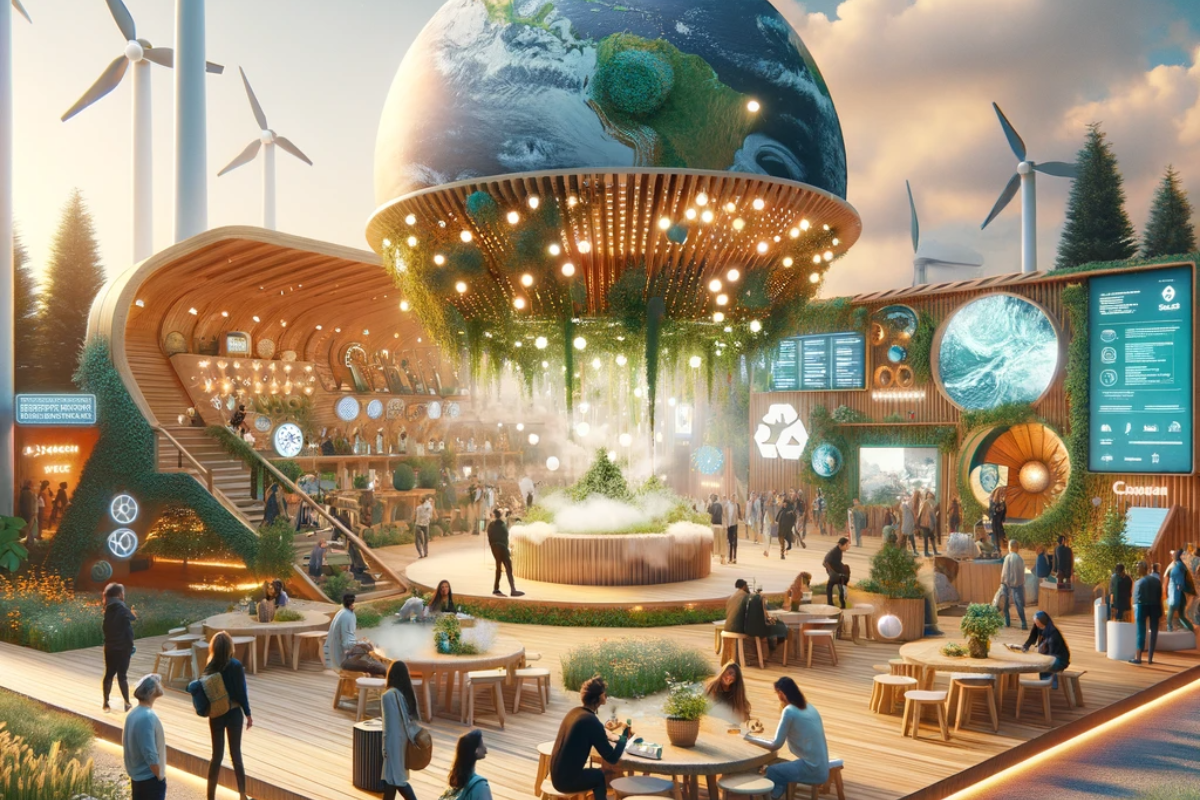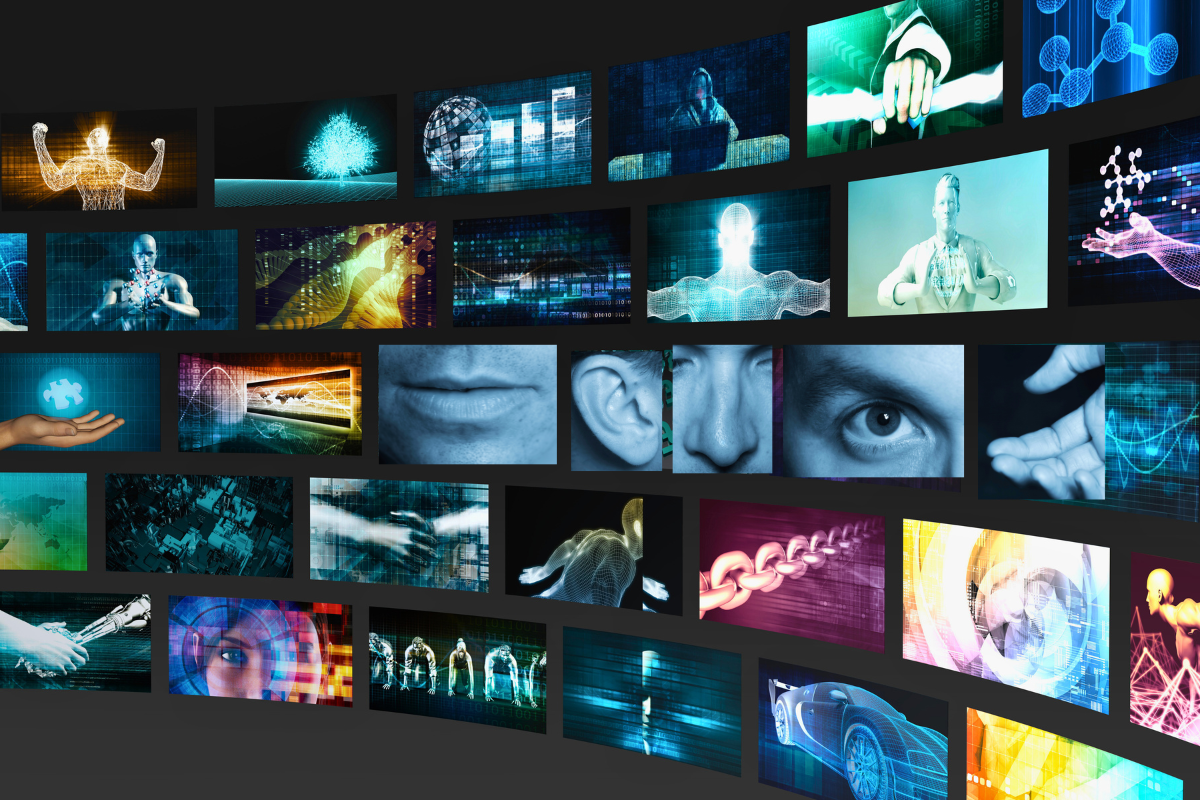
In this article, we will look at how technology has changed experiential marketing campaigns, providing instances of its use, defining its benefits and drawbacks, and...
In the dynamic world of marketing, staying ahead is crucial. As 2024 begins, experiential marketing takes the cake, yet again, evolving to meet changing consumer preferences.
This article explores the latest trends, from immersive experiences to strategic use of social media, influencers, and cutting-edge technologies like VR, AR, and AI. Experiential marketing now goes beyond visuals, incorporating smell, touch, and sound for lasting emotional connections. Brands, with a forward-thinking approach, showcase resilience and innovation in navigating the competitive landscape.
Join us in exploring the top 13 trends in experiential marketing and how you can forge memorable connections throughout 2024.
The following trends are not presented in a particular order
As technology progresses, brands are increasingly adopting immersive virtual experiences to deepen connections with their audience.
Virtual Reality (VR) and Augmented Reality (AR) play integral roles in experiential marketing, providing consumers with unique and engaging interactions. The VR industry, as stated by Fortune Business Institute, has a Compound Annual Growth Rate (CAGR) of 31% from 2023 to 2030, underscoring the rapid expansion and potential of virtual reality experiences.
Additionally, Rachel Chan and Yulio Technologies report that 51% of the U.S. population is aware of virtual reality devices, with 22.4 million Americans already being VR users.
Through VR, brands can transport participants into immersive digital environments, allowing exploration and engagement with products or services in a virtual realm. In contrast, AR overlays digital elements onto the real world, seamlessly blending the physical and digital.
According to Threekit, 100 million consumers actively use AR to shop both online and offline, highlighting the widespread impact of augmented reality on consumer behavior.
Moreover, Per Josh Howarth with Exploding Topics, AR-based shopping encourages nearly half of all consumers to spend more, emphasizing the significant influence of augmented reality not just in engagement but also in driving consumer spending habits.
These technologies not only captivate audiences with innovative storytelling but also empower brands to showcase products dynamically and personally.
The capacity to craft virtual spaces or enhance real-world experiences opens new avenues for brands to captivate, inspire, and create a lasting impression on their audience within the rapidly evolving landscape of experiential marketing.

Personalized interactive content takes center stage as a crucial element for brands seeking to create meaningful connections with their audience.
This trend surpasses mere customization, delving into tailoring content to individual preferences and behaviors.
Brands are harnessing data insights, to craft highly targeted and engaging interactive experiences, whether through immersive virtual reality scenarios, interactive pop-up installations, or gamified elements.
The objective is to provide participants with an experience uniquely crafted for them, using real-time adjustments to ensure the encounter evolves based on their reactions.
According to HubSpot, 29% of marketers actively use content marketing, indicating that the space is currently not saturated, making for an untapped opportunity. Plus, on average, there is a 10% to 15% increase in revenue due to personalization, highlighting the tangible impact of tailoring content to individual preferences.
Data-driven personalization is paramount, with brands analyzing consumer behaviors and preferences to speak directly to each audience member. Tailoring experiences to specific preferences heightens relevance, and allows dynamic adjustments during an event to create immersive, responsive encounters.
Furthermore, seamless integration across platforms guarantees consistency, and gamification elements not only entertain but also elevate engagement.
Essentially, personalized interactive content stands as a strategic imperative, delivering immersive encounters that foster deeper connections, amplifying the impact of experiential marketing, and leaving lasting impressions within the competitive outlook of 2024.
The infusion of Artificial Intelligence (AI) is a transformative force reshaping how brands connect with their audience and view them in 2024.
By leveraging AI, brands are creating dynamic, personalized experiences that adapt in real-time, moving beyond static interactions. As mentioned by Forbes, 64% of businesses expect AI to increase productivity, underlining the broad impact and expectations surrounding AI integration.
Predictive analytics, another facet of AI, drives hyper-personalization by anticipating user needs and dynamically adjusting the experiential journey. Machine learning algorithms continuously refine and optimize strategies, analyzing user data to identify patterns and inform data-driven decisions for future campaigns.
As indicated by Statista, 88% of marketers working with AI say that the technology has helped them personalize the customer journey across different channels, further highlighting the significant role of AI in delivering personalized and impactful brand experiences.
What's more is that in IBM's Global AI Adoption Index, 54% of organizations report that AI provides cost savings and efficiencies, showcasing its practical benefits for businesses.
Chatbots, a key AI tool currently, serve as virtual assistants, providing instant engagement by offering real-time responses, guiding participants, and adding a conversational layer to the experience. Not only do they enhance engagement, but they also contribute to a portion of the cost savings by automating customer interactions and support processes.
AI-enhanced experiences are not only about innovation but about creating intuitive, responsive, and uniquely tailored interactions that resonate with consumers.

In 2024, sustainability emerges as a central theme, transforming from a trend to a strategic imperative for brands seeking a lasting impact.
Sustainable brand activations reflect an increasing environmental consciousness among consumers, emphasizing the integration of eco-friendly practices into experiential marketing efforts.
This holistic approach encompasses careful choices of recycled, upcycled, or biodegradable materials in activations, minimizing environmental detriment while delivering visually impactful experiences.
Brands are also implementing strategies to reduce their carbon footprint during events, optimizing transportation logistics, and integrating renewable energy sources like solar panels and wind turbines.
On the other hand, educational components are incorporated to raise awareness about sustainability, and transparent communication about initiatives, builds trust with consumers who prioritize eco-conscious values.
Overall, sustainable brand activations not only showcase a commitment to responsible practices but also set a new standard for impactful experiential marketing, aligning with consumer values and contributing positively to the environmental landscape.
Appealing to multiple senses enhances the overall experience and helps to increase ROI.
Brands are incorporating smell, touch, sound, and taste into their campaigns to create memorable and immersive moments that go beyond the visual. By engaging the olfactory senses with carefully crafted scents, brands evoke emotions and establish powerful associations with their products or experiences.
Furthermore, incorporating tactile elements adds a tangible dimension, allowing participants to physically interact with the brand, enhancing their connection. The integration of sound further enriches the experiential landscape, providing auditory cues that resonate with the brand's narrative.
This multisensory approach not only deepens the campaign's impact but also ensures a holistic and unforgettable experience that lingers in participants' memories long after the event concludes.
Integrating social media into experiential marketing is a continued trend, with 98% of consumers actively creating digital or social content at experiences and events.
Brands are strategically crafting shareable moments, encouraging attendees to share their experiences online and thereby amplifying the campaign's reach.
This symbiotic relationship between experiential marketing and social media extends the lifespan of events, leveraging user-generated content to build a lasting sense of community around the brand.
Encouraging the use of event-specific hashtags and fostering real-time engagement transforms attendees into enthusiastic brand advocates, organically expanding the campaign's reach across various social platforms.
The real-time nature of social media engagement not only enhances the immediate impact of events but also provides valuable insights for shaping future marketing strategies.
This dual integration ensures experiential marketing not only captivates attendees during the moment but also extends its influence far beyond the event itself.

In our rapidly changing world, privacy and security are paramount considerations for brands.
With the increasing integration of immersive technologies, social media, and data-driven strategies, brands must prioritize the safeguarding of consumer information. Implementing robust privacy measures becomes not just a legal necessity but a crucial aspect of maintaining consumer trust.
Brands are investing in advanced encryption, secure data storage, and transparent communication about data usage to ensure the protection of personal information collected during experiential campaigns.
Striking the delicate balance between creating engaging, personalized experiences and respecting user privacy becomes a defining challenge for brands navigating the intricate horizon of 2024's experiential marketing.
The successful incorporation of privacy-centric practices not only enables compliance with regulations but also fosters a relationship of trust between brands and their audience.
The influencer marketing industry is projected to reach 13.8 billion USD in 2024, and over the past year, we have seen many brands spend more on influencer marketing pre-, during, and post-event than ever before.
This trend is expected to intensify in 2024, amplifying the role of influencers in experiential marketing. Leveraging influencers has become increasingly popular as brands recognize the opportunity to extend their reach and connect authentically with their audience.
By incorporating influencers into events, brands not only tap into their substantial follower base but also benefit from the influencers' credibility and rapport.
This collaboration adds a human touch, making the overall engagement more genuine and fostering a deeper connection with the audience. Furthermore, influencers often bring a fresh and influential perspective, injecting creativity and resonance into the brand narrative.
Their active participation transforms the experiential event into a shared journey, creating moments that resonate across social media platforms that magnify the campaign's impact.
The influencer's ability to authentically share their personal experiences with the brand not only enhances authenticity but also strengthens the connection between the brand and its audience, contributing significantly to the overall success of the experiential marketing activation.
Live streaming adds a real-time element to experiential marketing.
In the second quarter of 2023, online videos achieved a global audience reach of approximately 92.3% among internet users. With 27.6% of those online videos being live streams.
Brands methodically leverage platforms like Instagram and Facebook Live to connect instantly, fostering a sense of urgency and exclusivity. This interactive approach allows for direct conversations, with brands responding to comments in real-time, amplifying reach, and enhancing brand authenticity.
The immediacy of live streaming not only actively engages audiences but also creates a sense of community, transforming passive viewers into active participants in the brand's narrative.
Overall, the dynamic integration of live streaming into experiential marketing not only captures attention during the moment but also reshapes viewer habits. Redirecting their focus from traditional TV consumption to engaging with brands in real-time digital experiences.
In a world where virtual and physical spaces coexist, hybrid events are gaining momentum, with 40.6% of attendees stating that hybrid was their favorite format of events.
Brands can strategically blend in-person and virtual experiences to foster inclusivity and accessibility, breaking geographical barriers and accommodating diverse preferences. This hybrid approach allows participants to engage seamlessly whether physically present or joining remotely, ensuring a dynamic and inclusive event environment.
By integrating interactive virtual components with on-site activities, brands may recognize the importance of flexibility and adaptability in an ever-changing landscape where physical and virtual boundaries are increasingly fluid.
The rise in preference for hybrid events emphasizes the effectiveness of this approach in catering to diverse audience needs and expectations, signaling a pivotal shift in the event landscape.
Brands are embracing data-driven decision-making as a foundational strategy in 2024.
This transformative shift empowers brands to gather valuable insights from consumer interactions, enriching campaign effectiveness and shaping the future of experiential marketing.
Through the utilization of advanced analytics and sophisticated tools, brands meticulously collect, analyze, and interpret vast amounts of event-generated data, capturing consumer behaviors, preferences, and engagement patterns.
Predictive analytics also emerges as a powerful tool, allowing brands to foresee trends, tailor content, and make real-time refinements, ensuring they remain ahead of evolving consumer expectations.
The flexibility for on-the-fly adjustments during events, facilitated by predictive models, dynamically optimizes the brand experience at hand.
Central to this approach is the pivotal role of machine learning algorithms in continuous learning, analyzing evolving patterns and insights to adapt and refine strategies. Informed by past campaign insights, data-driven decision-making ensures future experiential marketing strategies are more targeted, engaging, and aligned with consumer expectations.
This strategic approach not only leverages data but unlocks its full potential, enabling brands to forge more meaningful and impactful connections with their audience in the competitive landscape of 2024.
With experiential marketing activations delivering 65% of a brand’s total ROI in marketing, the integration of data-driven decision-making becomes even more pivotal in maximizing the returns on these activations.
Pop-up events remain a potent tool for brands to engage their audience uniquely.
Interactive pop-ups showcase products while immersing consumers in the brand's ethos. By incorporating cutting-edge tech and sensory elements, these installations create an experiential journey, fostering connections and leaving a lasting impression.
This reinforces that experiential marketing is about more than selling products; it's about crafting unforgettable brand experiences.

The recognition of emotional connection as a pivotal metric is reshaping the way brands measure success, with the rate of customers who recommend a brand based on emotional connection being 71%.
Brands are now acknowledging that creating lasting consumer loyalty goes beyond transactional engagements; it hinges on the ability to create deep emotional resonance.
Crafting narratives that evoke positive emotions, whether through joy, nostalgia, or excitement, has become a strategic imperative.
This shift is evident as 70% of viewers who've experienced an intense emotional response to an ad were very likely to buy the product, highlighting the significant impact of emotional connections on consumer behavior.
Brands are progressively shifting from product-centric approaches to designing stories that foster reliability. Further understanding that emotional impact significantly contributes to brand recall and sustained customer loyalty.
Moreover, personalization is employed to deepen individual connections, interactive elements strategically evoke emotions, and measuring emotional engagement becomes a nuanced measure of success.
As brands create shared experiences that encourage participants to share their emotional journey, a sense of community is fostered, solidifying the emotional bond with the brand.
This paradigm shift underscores that experiential campaigns are not just about creating moments but cultivating enduring emotional connections, laying a robust foundation for sustained brand loyalty in the competitive marketing world of 2024.
These pivotal trends redefine how brands engage their audience throughout 2024.
The integration of AI stands out, ushering in dynamic, personalized experiences through the use of chatbots, predictive analytics, and machine learning. This not only signifies a leap in technological sophistication but also marks a transformative shift in how brands connect with their audience.
Moreover, there is a notable recalibration of success metrics, with a clear emphasis on emotional connections. Crafting narratives, personalizing experiences, and thoughtfully designing interactive elements have become integral components of campaign evaluation, recognizing the profound impact of forging deep emotional resonance.
However, the significance of privacy and security cannot be overstated in this data-rich environment, leading brands to adopt robust measures to safeguard consumer information and establish trust.
Furthermore, immersive virtual experiences using VR along with AR, sustainable brand activations, and multi-sensory engagements contribute to enhancing overall experiences, ultimately contributing to increased ROI. Social media integration, live streaming, and hybrid events continue to play strategic roles, capturing attention and reshaping viewer habits in real time.
Lastly, data-driven decision-making emerges as a powerful tool, empowering brands to refine strategies dynamically, ensuring that experiential marketing remains targeted, engaging, and aligned with evolving consumer expectations. Concurrently, interactive pop-up installations serve to showcase products while fostering meaningful connections that leave lasting impressions.
As brands seamlessly integrate technology, emotional resonance, and shared experiences, experiential marketing emerges as a dynamic and resilient facet of marketing, laying the foundation for lasting connections in the competitive industry of 2024.

In this article, we will look at how technology has changed experiential marketing campaigns, providing instances of its use, defining its benefits and drawbacks, and...

Sensory marketing has altered how we communicate with our customers. You can use the power of sensory stimulation to create memorable, immersive experiences.
The science...